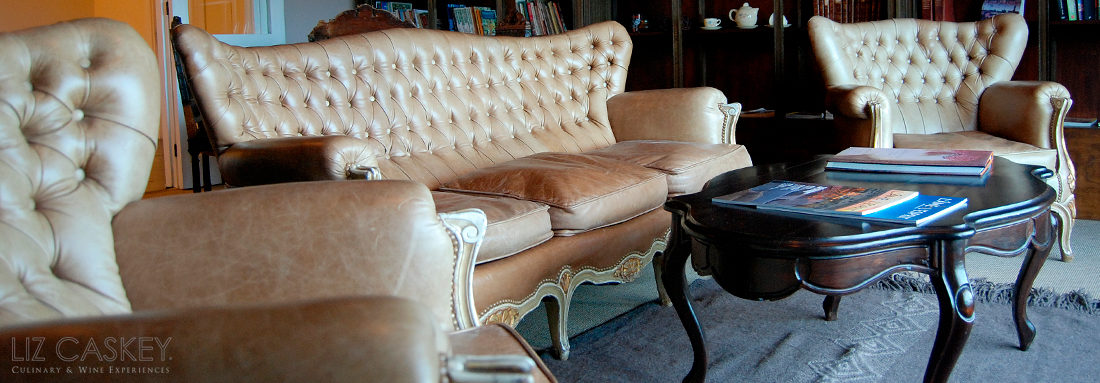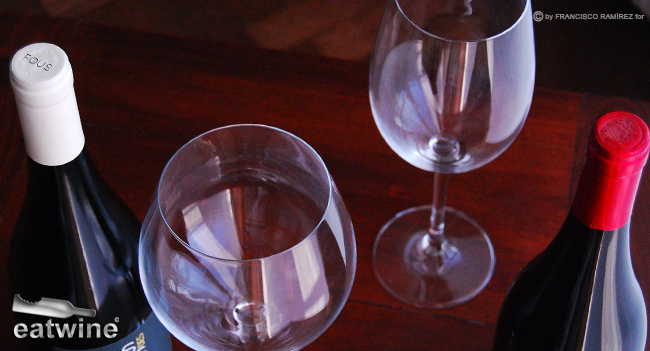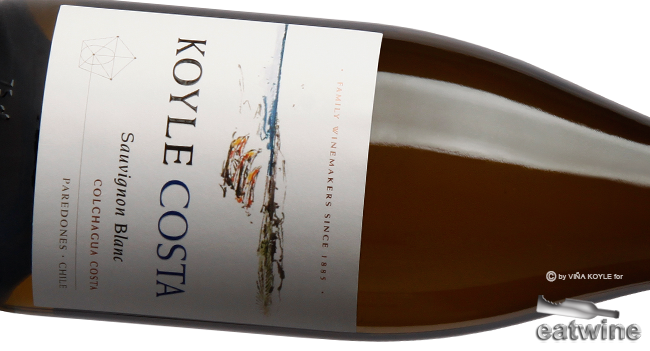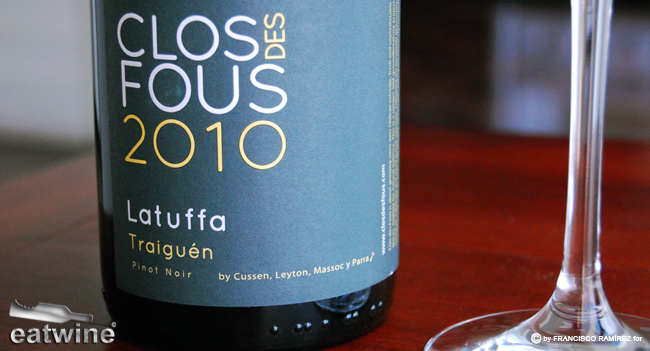Every morning for the past month, I have been waking up early to meditate. It’s become a sacred space to quiet my mind, focus on all the positive things I want to do/be/have/achieve in the day. By the time the dawn is starting to peak over the Andes I feel calm, centered, and completely connected to myself, the universe, and to others. This simple practice (only a little willpower needed to get out of bed) has had such a positive spillover effect into all parts of life, it’s gaining momentum.
This weekend, as my husband and I were musing over a favorite Syrah made from a boutique/garage wine from MOVI (Movement of Independent Vitners) we became totally enthralled in its depth and power of expression. It truly spoke with a clear message as to its place of birth: the granitic soil, the intense sunlight, cool nights, all reflected in its tension between tannins-acid-alcohol. It spoke of the man who made that wine with such love, passion. The wine was balanced with wild yet rounded tannins that caressed our palate and an acidity that lingered on and on. It was a moment of bliss in a glass and not unlike that fuzzy, warm, I-love-the-world-and-life sensation I get while I am meditating. Who says wines can´t be meditative?
In that vein, I decided to pull together my top five wines that have created pause, for me, as of late. These are wines, winemakers, and projects who are totally committed to showing the depth and diversity of Chile’s myriad of microclimates, soils, and expressions. Fresh perspectives and passionate people not afraid of walking to their own (wine) drum. Open a bottle, decant for an hour (except the Sauvignon Blanc), and give yourself some quiet time to reflect. The perfect exercise is during 30 minutes, tasting and tasting again as the wine evolves. The wine will speak to you—if you have the patience to open up to it and listen.
Koyle Costa (Sauvignon Blanc 2012): This organic and biodynamic project is located in the Los Lingues, Alto Colchagua, in the folds of the Andes Piedmont. Overseen by the Undurraga family (who have since sold their original winery), the family is fully vested in this project and exalting the terroir from this corner of Colchagua. At an event there not so long ago to launch their new Auma icon wine, I was totally blown away by this coastal Sauvignon Blanc. While most of Chile’s Sauvignon Blancs come from the coastal regions like San Antonio, Leyda, and Casablanca, a handful of winemakers in Colchagua are finding excellent granitic soil near the rugged Pacific for a new expression of Sauvignon Blanc. This is the third Sauvignon Blanc I have tasted from the Paredones area (western Colchagua) and it is exactly my kind of white. With the 2012 vintage, the nose has almost a wet sand and fresh seashore smell with some citrus notes behind it. The mouth is almost sparkly, very dry, and has marked mineral notes. It is a linear, high-acid wine that is lean yet bright, and really transports you to the coast. I can almost hear the seagulls cry.
Montsecano Refugio (Pinot Noir 2010): This is the project of organic Alsace producer, Andre Ostertag, only 12km from the Pacific coast and in the foothills of the Coastal mountains in the Casablanca Valley. The chilly ocean breeze gives an average summer temperature no higher than in Burgundy although constant sunshine ensures bright ripe fruit balanced by lovely fresh acidity. Totally smitten with this biodynamically farmed Pinot Noir (disclaimer: I am Pinot Noir obsessed!). The nose is earthy paired with intense red, crunchy fruit that almost tickles your nose hairs. Behind that, scents of blueberries, cherries, tobacco, and new leather (ahh). In the mouth, this wine departs from the sometimes tartness of many Casablanca Pinots. It’s darker than most but has good acidity and feels fresh. Yet it gives you something to sink your teeth into. Love at first sip.
Clos des Fous (Latuffa Pinot Noir 2010): This is a new partnership between the father of terroir in Chile, Pedro Parra, winemaker François Massoc, viticulturist Paco Leyton, and businessman Albert Cussen. The concept is to explore extreme terroirs and go against the buck of traditional wine styles. Hence the winery’s name, meaning ‘Vineyards of the Crazy Men’. We waxed over their expressive Pinot Noir from Traiguén, in Malleco Valley, one of the southernmost growing areas in Chile (and interestingly on the same latitude as Central Otago in New Zealand). This wine is a beautiful ruby color and has that typical nose I associate with good (cool weather) Pinot from the Williamette Valley in Oregon with floral aromas such as violets and red fruit like strawberries, and “nutty” notes intertwined with vanilla. In mouth, hello Pinot, I have missed this style in Chile. Elegant, fine tannins, and a refreshing acidity with flavors that linger. Grace, finesse, and a glimpse of what’s coming in Pinot Noir in Chile.

Cuvée del Maule (Blend 2010): I was first intrigued by this wine because its label was familiar. It reminded me of a favorite Malbec Blend in Mendoza, Cuvelier de los Andes. Low and behold, it’s the same owner. This wine was born in the aftermath of the massive 2010 earthquake (8.8 on the Richter scale) that rocked the Cauquenes region of Chile (nearly the epicenter). The winerywas destroyed, as was equipment, barrels and (sob) juice. Winemaker Baptiste Cuvelier picked through the surviving barrels and crafted this blend in homage to this region so affected by the quake. This cuvee is loaded with dense blue and black fruits, spice, and licorice. There are some notes of chocolate and crème de cassis. In your mouth, it’s round, ripe, and has something a little racy about it with that chocolate appearing on the back end. It is an unusual blend of 36% Cabernet Sauvignon, 30% Carmenere, 22% Merlot, 6% Carignan, 4% Pais, and 2% Cinsault and screams southern France. Plus it is an amazing value for under US$20 per bottle.
Louis-Antoine Luyt (Carignan, Trequilemu, 2010): Totally natural wines from Chile? You bet, baby. Native Burgundian Louis-Antoine Luyt is leading the charge in natural, terroir-driven winemaking in Chile, working with independent farmers throughout the Maule Valley. Luyt sources fruit from dry farmed, organically tended 70yo vineyards that are plowed by horse and managed in as hands-off a way as possible. This 100% Carignan, from vineyards between 200 to 250 meters in elevation, was vinified using native yeast and carbonic maceration, then aged for eight months in neutral oak barrels. He has two Carignans from the “Sauzal” and “Trequilemu” vineyards. I tried the latter. First, when tasting, remember these are natural wines; they are a little different than the heavily sulfited usual juice. The nose is full of delicately ripe, raspberries and blueberries. In the mouth there is more fresh fruit along with a slightly earthy note and mouthwatering acidity. It’s a different, easy drinking wine. Weighing in at 12.9% alcohol, you won’t be too silly if you drink a few glasses, too.
Where to get this yummy juice? There’s a wonderful wine shop right in my barrio, on a charming tree-lined street right off Lastarria. The owner, Arnaud Robert, a Frenchman living in Santiago, has a deep love for terroir wines and small, independent projects and has many of these wines on hand. He’s very knowledgable and also stocks some good charmant, champagne, and good French cheeses like Brebis and saucisson. Beware entering this store, I always leave with several items I don’t need—but are totally fun.















